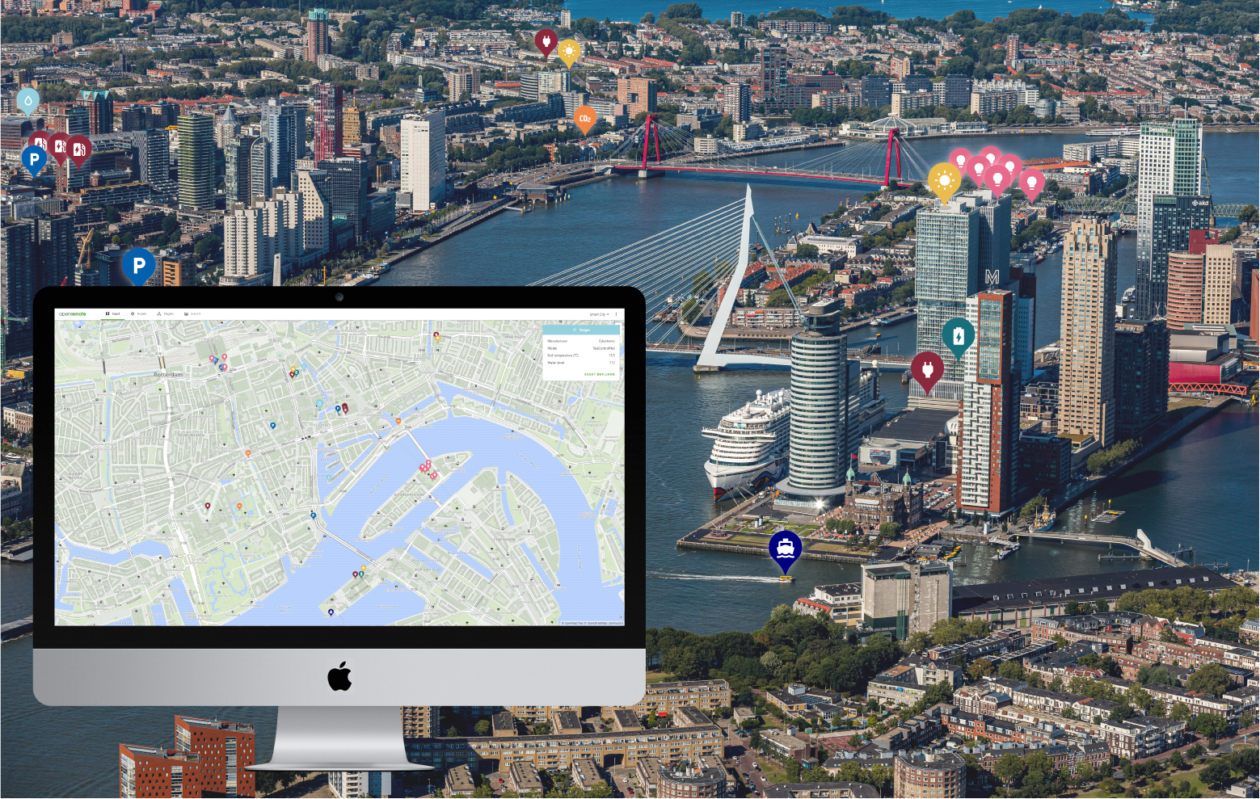
How IoT technology can help you break data silos and make your smart city smarter
The proliferation of digital vertical solutions is a critical issue for smart cities. But thanks to IoT technology, smart cities can unleash the power of advanced data visualisation and analytics across all city systems, revealing insights previously out of their reach.
The ever-increasing number of digital vertical solutions creates new challenges for cities. With each new connected-devices project, developed by any given city department, comes a new unique data solution. And each solution is generally created with its own logic and data protocols, as well as its own maintenance needs. Each project strives to design its own optimal solution, with little or no insight on how it will enable other city systems. More often than not, these new solutions developed in silo turn out to be far from optimal when considering new future city applications.
Fortunately, this critical flexibilty issue can be tackled by advanced IoT platforms which can swiftly take different data from verticals into one single spot, creating the opportunity to find correlations, and to unlock specific new applications that improve the efficiency with which cities manage their assets and improve workflows and services.
A shared overview between departments
A user-friendly IoT platform web application is a great communication tool for inter-departmental coordination. With a shared dashboard that shows maintenance needs across several asset types (be it planned or unexpected repairs), users can schedule their maintenance work collaboratively as they are now aware of each other’s issues. And that goes a long way to solving issues more efficiently, especially concerning repair works or interventions that are disruptive to the public space. For example, a road that needs maintenance of the monitored sewer system, repairs to the road surface and re-lamping the light posts, can be only closed one time for the intervention of three separate departments to take place if such interventions are coordinated properly, thus minimizing closure time.
What’s more, an IoT system with an issue-tracking workflow will not only give users the overview they need but will also give them the ability to directly monitor, repair and update the assets in the system. This cuts down the overhead needed to manually combine data from different (subcontractor) systems.
Gain new insights by analysing all your integrated data
In addition to the practical benefits described above, a shared IoT platform will considerably improve data analysis capabilities for all users. With (authorized) access to all data, new knowledge can be gained by combining the data of assets from different projects and departments. For instance, traffic sensors, parking space systems, bicycle path counters and footfall monitors can be combined to create a complete mobility overview.
Users will not only be able to compare time periods to analyse the performance of their own system, but they will also be able to run comparisons with other systems and gain new insights. For example, smart lighting can be combined with people monitoring to make responsive lighting.
These innovations lead to improved decision-making and new collaborations between projects and departments. With the support of machine learning, the platform will automatically identity and suggest new relationships among systems that users can further investigate.
Unlock new capabilities by combining your systems
The platform enables digital vertical solutions to “talk to each other”, offering a whole new range of functionalities. Let us explain this by way of practical examples again. Just imagine how advanced sound monitors that can detect aggression or accidents could automatically increase the brightness of lighting at that specific location, thereby improving public safety. Or imagine how we can improve the city’s sustainability by adjusting electric car charging speeds according to solar power generation fluctuations. The potential applications are endless, from assessing the impact of traffic on air quality, to measuring the level of commercial development of a particular area by combining qualitative questionnaires, footfall data and parking space use during the day…
Thanks to IoT interconnections, the sensors of one project can even activate devices of another project, creating services not possible before, and making smart cities much smarter!